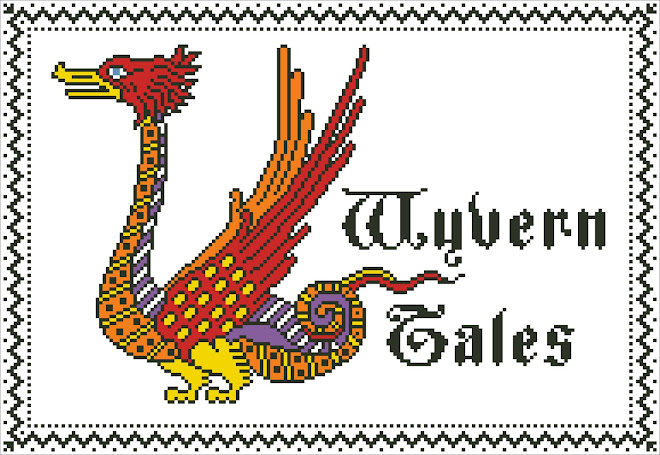The Mozarabic influence on Spanish illumination continued well into the 12th century. Wonderful architectural details of obvious Arabic origin can be found in manuscripts. This graceful double arch is adapted from the 12th-century "Cardena Beatus" (New York, Metropolitan Museum of Art). To see pictures from this manuscript, go to Cardeña Beatus.
And here are two of my favorite characters from the 12th-century "Silos Beatus" (London, British Library). Very early disco indeed! At least their clothing was not made out of polyester. To see pictures from this manuscript, go to Silos Beatus.
(Why this fellow is playing a bird is beyond me!)
By the 13th century, however, Spain had seen a political and cultural change that brought it into the fold of continental Christiandom. This is vividly depicted in manuscript pictures where drolleries, knights, minstrels, and other well-known medieval motifs now appear. Here are two sweet drolleries from the 13th/14th-century "Vidal Mayor", a collection of Spanish law texts (Los Angeles, J. Paul Getty Museum).
Alphonso X "El Sabio" (1221-1284), King of Leon and Castile, commissioned several well-known, stunning-illustrated manuscripts on such topics as songs and games which give us a brilliant view into 13th-century Spain. To see pictures from these manuscripts, go to The Cantigas de Santa Maria and Alphonso X Book of Games Home Page.
And finally, full-blown continental medieval Christianity appears in the form of the knight. But even this knight, from the 14th-century "Libro de la Confradia de Caballeros de La Luente" (Burgos, Archivo Municipal), still retains some of that exotic Mozarabic style we originally saw from six centuries earlier.
Tuesday, September 14, 2010
SPANISH ILLUMINATION, 12TH TO 14TH CENTURY
Subscribe to:
Post Comments (Atom)







Nice new set! Very cool!
ReplyDeleteThe man playing the bird reminds of this Old English riddle from the book of Exeter in which a bagpipe is described as a bird. I wonder if there could be a connection.
ReplyDeleteRiddle 44
Beautifully made in many ways
is this our world, cunningly adorned.
I saw a strange thing singing in a house;
its shape was more wonderful than aught among men.
Its beak was underneath, its feet and hands birdlike,
yet fly it cannot nor walk at all.
Yet eager for movement it starts to work
with various arts. It often goes around
again and again among noble men.
It sits at the banquet-board, awaits its turn
till comes its time to display its skill
among those who are near. It partakes of nothing
that the men there have for their pleasure.
Brave, eager for glory it remains dumb,
yet it has in its foot beautiful sounds,
a glorious gift of song. Wondrous it seems to me
how this very thing can play with words
through its foot beneath adorned with trappings.
It has on its neck when it guards its treasure,
bare, proud with rings, its two companions,
brother and sister. It’s a great thing surely
for a wise singer to think what this is.